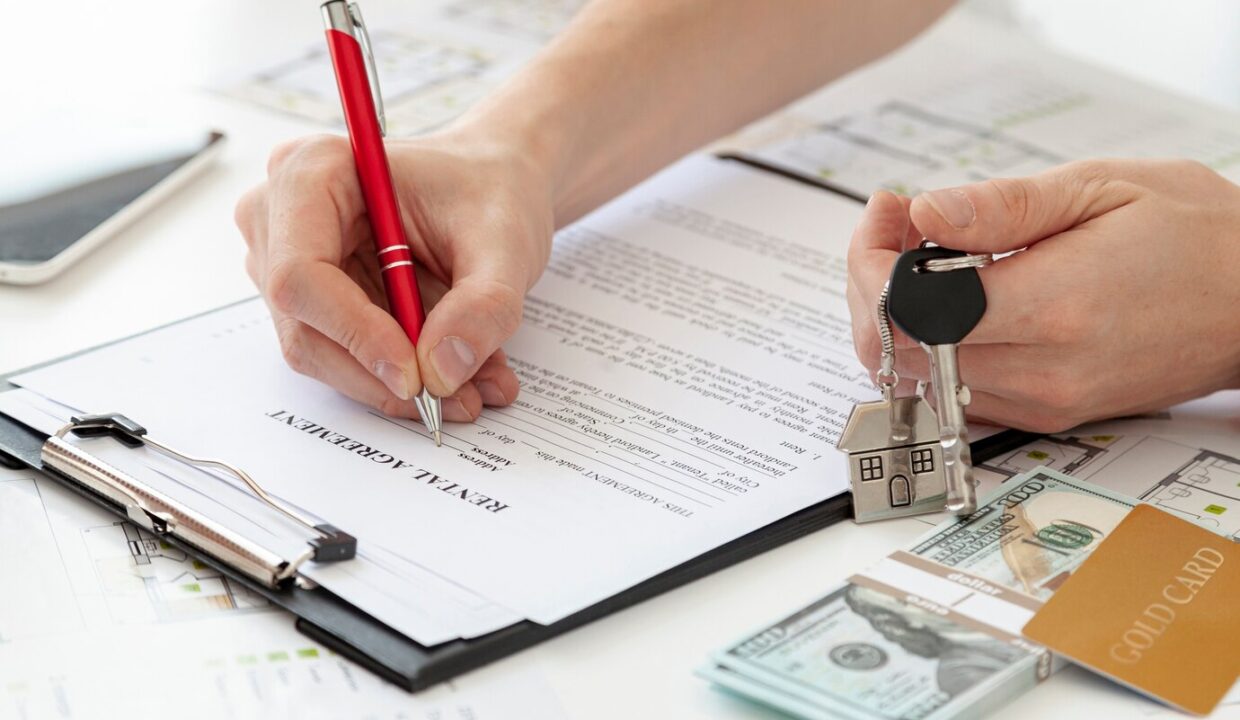
Renting a property involves more than just finding the perfect space; it requires a formal agreement that outlines the terms and conditions to ensure a smooth landlord-tenant relationship. A well-drafted rental agreement serves as a crucial document, protecting the interests of both parties involved. In this blog, we will explore the essential elements and format of a comprehensive rental agreement.
Download Free Rent Agreement
Rent Agreement- Introduction:
A rental agreement, also known as a lease agreement, is a legally binding contract between a landlord and a tenant. It establishes the terms and conditions governing the rental arrangement, offering clarity on responsibilities, rights, and obligations of both parties.
Key Components of a Rental Agreement:
-
Parties Involved:
Clearly mention the full names and addresses of both the landlord and the tenant. Include any co-tenants or additional occupants. Property Details:
Provide a detailed description of the rented property, including its address, unit number, and any specific details that uniquely identify the premises.
-
Term of Lease:
Specify the duration of the lease, whether it’s a fixed-term lease (e.g., one year) or a month-to-month agreement. Clearly outline the start and end dates. -
Rent Details:
Clearly state the monthly rent amount, due date, and the acceptable modes of payment. Include any penalties for late payments or bounced checks. -
Security Deposit:
Clearly outline the amount of the security deposit, its purpose, and the conditions under which it will be returned to the tenant. -
Maintenance and Repairs:
Detail the responsibilities of both parties regarding maintenance and repairs. Specify which party is responsible for specific repairs and under what circumstances. -
Utilities and Services:
Clarify which utilities and services are included in the rent, and which are the responsibility of the tenant. This may include water, electricity, gas, internet, etc. -
Termination and Renewal:
Outline the conditions under which the lease can be terminated by either party and the process for renewal. Rules and Regulations:
Include any specific rules and regulations related to the property, such as restrictions on alterations, subletting, or any other pertinent guidelines.
Signatures:
Conclude the agreement with the signatures of both the landlord and the tenant, indicating their understanding and acceptance of the terms outlined in the document.
Drafting the Rent Agreement:
While numerous templates are available online, it’s advisable to tailor the agreement to suit the specific circumstances of the rental arrangement. Seek legal advice if needed, and ensure that both parties thoroughly understand the terms before signing.
Crafting a well-structured rental agreement is a crucial step in establishing a transparent and harmonious landlord-tenant relationship. By paying attention to the format and including all essential elements, both parties can enjoy a secure and mutually beneficial rental experience. Always remember, a clear and comprehensive rental agreement is the foundation for a successful and stress-free leasing arrangement.

